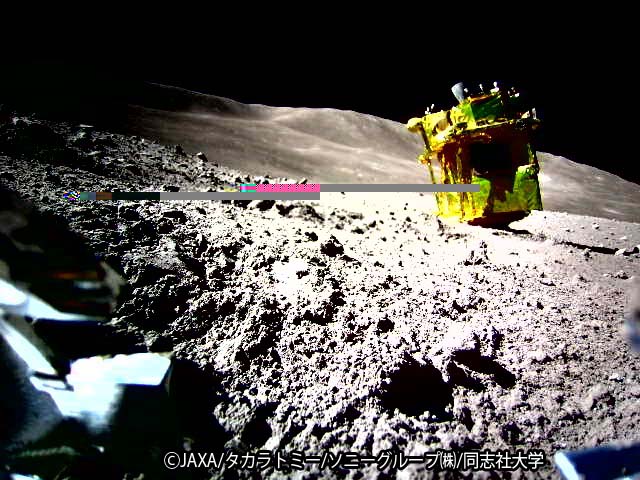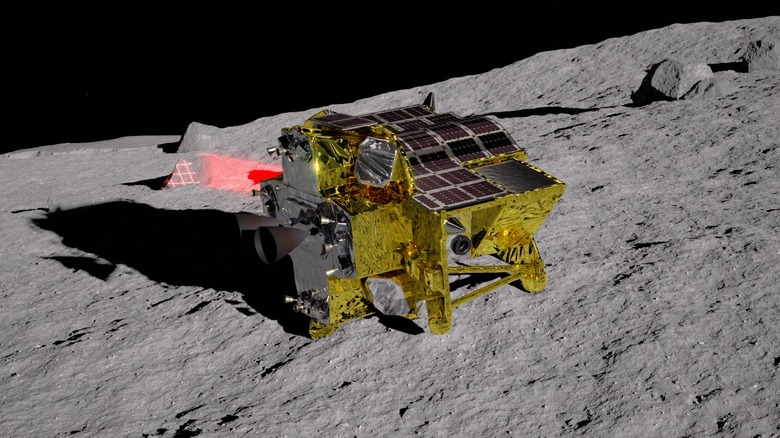First Photo Of SLIM Lander On Lunar Surface Reveals Why It's Having Problems
Earlier this month, Japan's highly-anticipated moon mission, the SLIM lander (Smart Lander for Investigating Moon), successfully landed on the lunar surface with pinpoint precision. However, shortly after landing, JAXA turned off the SLIM lander, citing an issue with the solar panels pointing west, away from the Sun. Now, we finally know what happened.
According to a statement and a newly released photograph of the lander, JAXA says that it appears to have landed on its nose, with its main thrusters pointing up toward space. This would explain why the lunar lander has been unable to get power to its solar panels, which should be facing eastward towards the sun but instead are facing to the west.

It's a curious problem and one that could very well doom the spacecraft to a powerless life on the lunar surface. The photo that revealed this information was taken by a small robot ejected from the SLIM lander after its landing. The robot, named LEV-2, or SORA-Q, is one of two tiny rovers that hitched a ride to the moon aboard SLIM. You can see the proper orientation it should be at in the image at the top of this article.
While the image of the SLIM lander isn't exactly the greatest ever taken, it is the first image taken by a Japanese robot on the lunar surface, making it a pretty big deal for Japan's space agency. Despite having landed on its nose, the SLIM lander's descent to the moon is still considered successful, as the lander didn't explode, and it still managed to land where it needed to.
How exactly it came to be on its nose is unclear. It could have landed awkwardly and then fell over, or perhaps the landing didn't go as smoothly as JAXA thought. Either way, the space agency is hopeful that SLIM will pick up some sun before it sets in that area on February 1. After that, though, any hope of reviving the lunar lander is likely lost.
